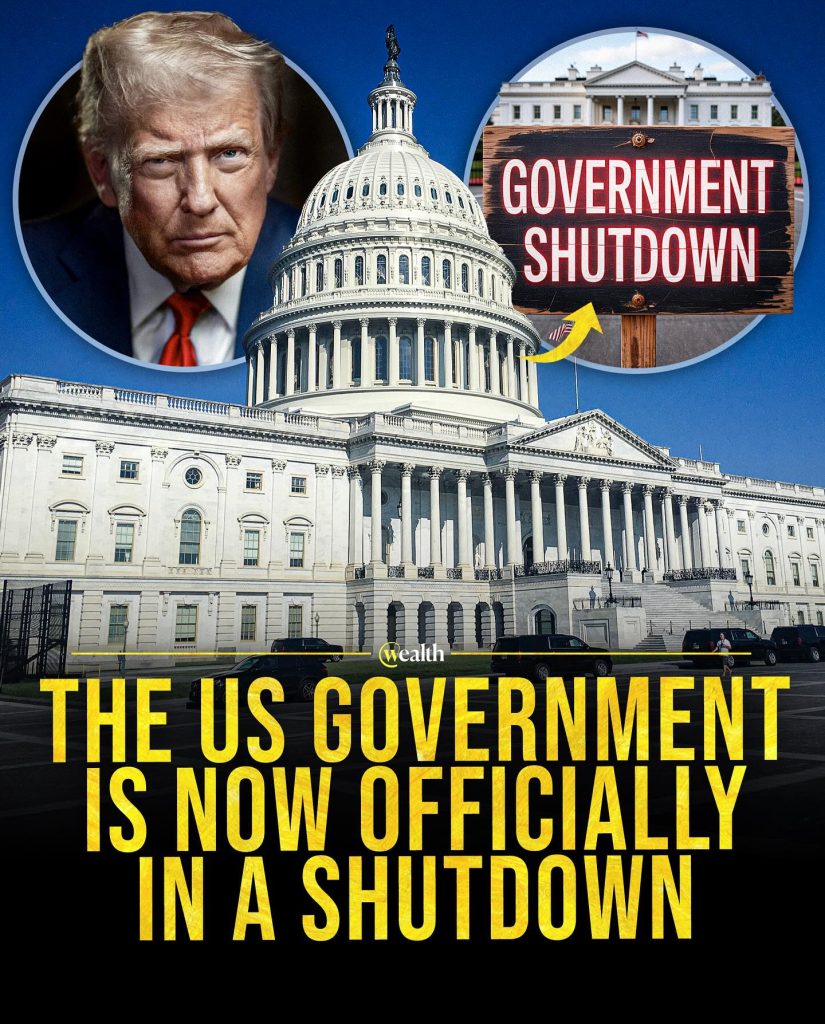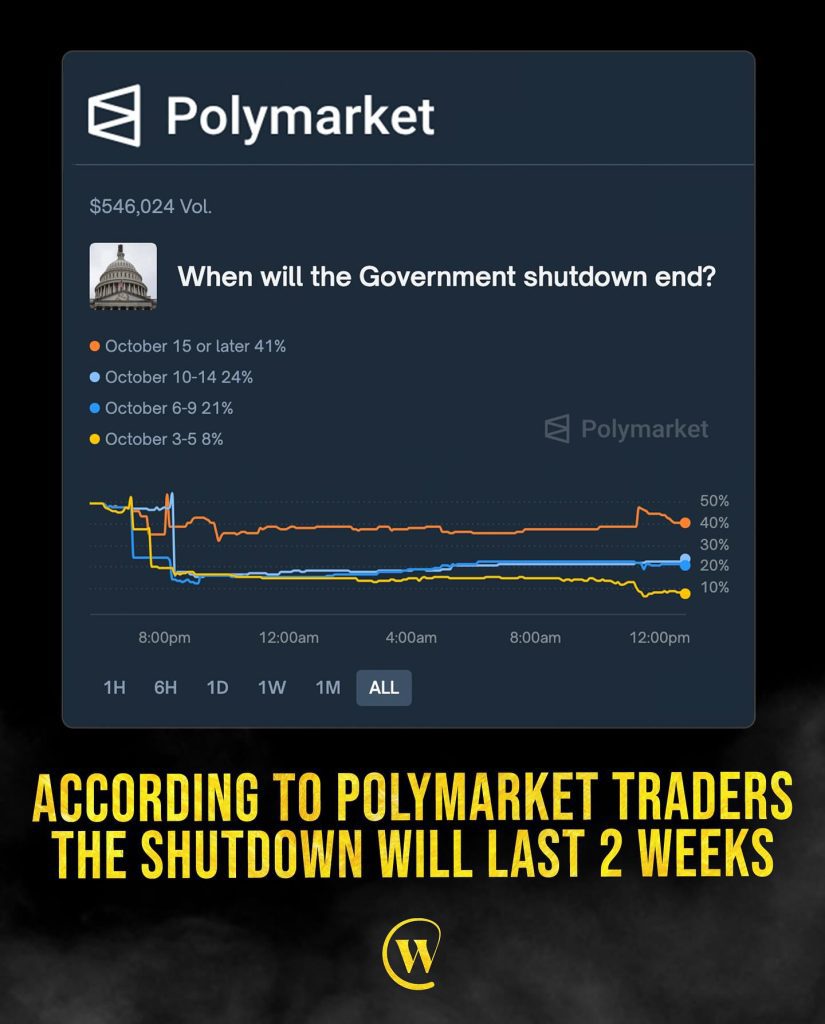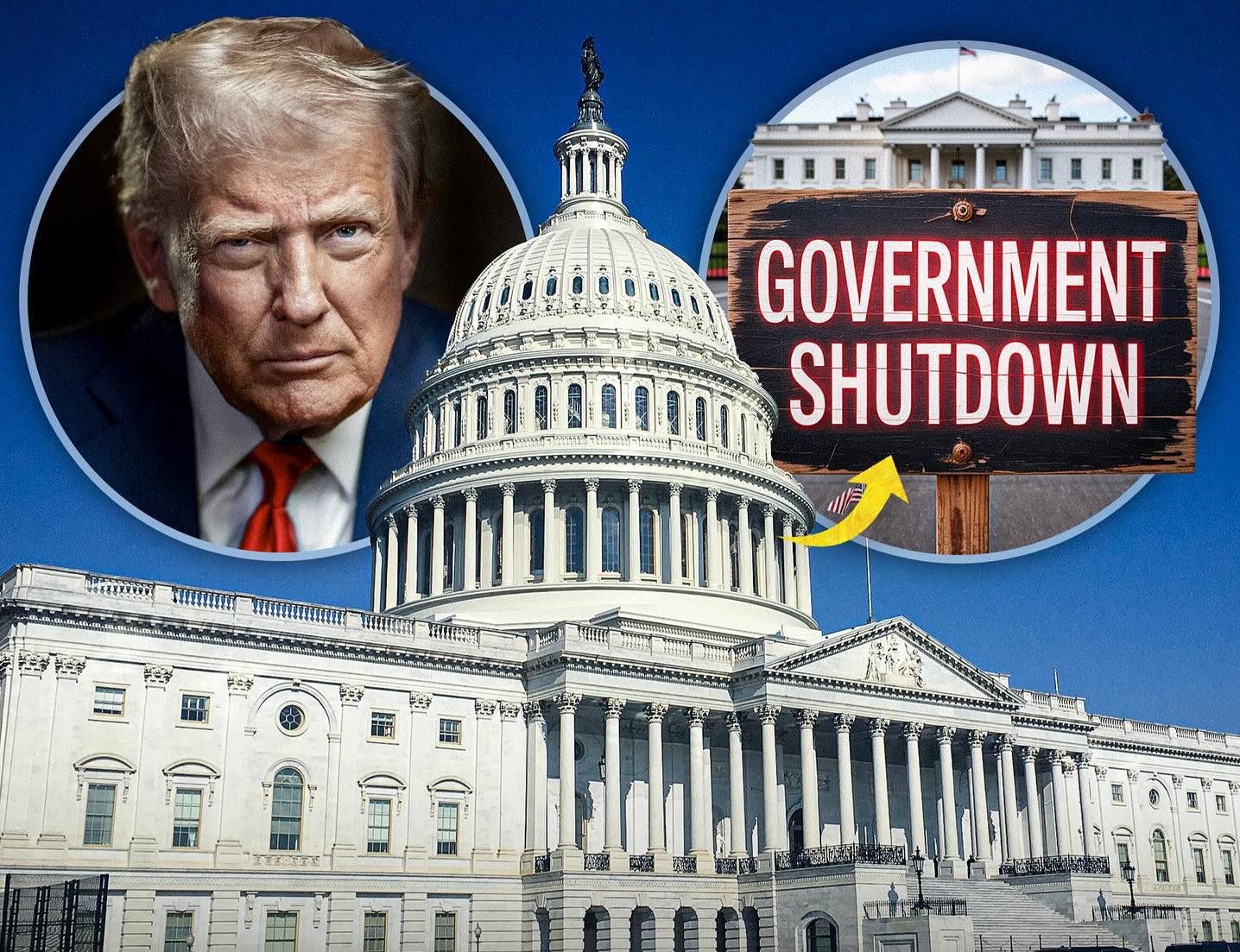The US Government Is Officially in a Shutdown After Congress Missed the Funding Deadline—Markets Predict a Two-Week Pause, the First Since 2019
The US Government Is Now Officially in a Shutdown

The political standoff in Washington has tipped over into reality: the US government is now in a shutdown. That means federal agencies are scaling back, certain services are paused, and thousands of employees are being sent home without pay. The iconic dome of the Capitol now symbolizes not just the seat of democracy but also the gridlock that has once again paralyzed it.
Shutdowns are not rare in American politics, but each one comes with its own ripple effects. Essential services such as air traffic control, border security, and emergency medical response continue to function, but many other areas of government grind to a halt. Federal museums, research projects, and non-essential administrative offices lock their doors, waiting for Congress to find a path forward.
For the average person, the idea of a government “closing” sounds almost impossible. Yet here it is, not in theory but in practice. The immediate impact falls hardest on government workers, families who suddenly have to go weeks without pay, and ordinary citizens who depend on services now left in limbo.
The U.S. Government Just Pressed Pause Because Congress Missed the Funding Deadline

This shutdown didn’t happen because of a single issue—it happened because lawmakers failed to pass the bills needed to keep funding flowing. Think of it like forgetting to pay the electricity bill, except instead of lights going off in one home, it’s the world’s largest government that flickers. Congress had until the end of September to act, and when the deadline came and went, the wheels of government simply stopped turning.
About 750,000 federal workers are facing furloughs, their paychecks delayed indefinitely. According to estimates from the Congressional Budget Office, that’s a daily hit of nearly $400 million in lost or delayed wages. For families living paycheck to paycheck, that’s more than just politics—it’s food on the table, bills waiting, and uncertainty about when relief will come.
For small businesses around military bases or government hubs, the shutdown trickles down quickly. Less spending power in local communities means restaurants, shops, and contractors also start to feel the pinch. Every day that passes carries a cost, one that goes beyond Washington headlines.
According to Polymarket Traders, the Shutdown Will Last 2 Weeks

Outside of the political halls, people are already trying to predict how long this pause will last. Prediction markets like Polymarket have become a way for traders to put money behind their guesses, and right now the consensus is sobering. According to Polymarket, the most likely outcome is that the shutdown stretches into mid-October, with a strong chance it lasts two full weeks or longer.
At one point, the “October 15 or later” bracket made up over 40% of predictions. That tells us something simple: those watching closely don’t believe this will be resolved overnight. The divisions in Congress run deep, and compromises that once might have bridged the gap seem harder to find today.
For families waiting on pay, two weeks is an eternity. For markets, it’s uncertainty. For the rest of the world, it’s a reminder that even the largest democracy can struggle to keep its own house in order.
This Is the First Government Shutdown Since 2019

Shutdowns aren’t unheard of, but they aren’t routine either. The last time the United States went through one was in 2019, and that shutdown stretched on for 35 days—the longest in history. It caused deep disruptions across the country and left scars that many federal workers still remember.
Now, in 2025, the shutdown has returned. The political climate looks different, but the echoes of the past are loud. Lawmakers know the damage a long shutdown can do, yet still, here the country stands again, waiting for Congress to act. For many, it feels like déjà vu, the same frustrations replayed in a new year.
This shutdown will inevitably become a political weapon. Each side will blame the other, pointing fingers as families sit at kitchen tables trying to figure out how to bridge the gap until paychecks resume. But beyond the rhetoric, this is a story of ordinary people carrying the burden of extraordinary dysfunction.
Closing Thoughts
When the US government shuts down, it’s more than a headline—it’s a lived experience for millions. From families in Washington, D.C., to federal workers in rural towns, to soldiers waiting for contracts to be renewed, the pain spreads wide and fast. Prediction markets might point to two weeks, but even a day feels long when pay is paused and uncertainty hangs in the air.
The last time this happened, the government stayed dark for more than a month. This time, nobody knows for sure. What we do know is that the cost is real, the frustration is deep, and the world is watching.

